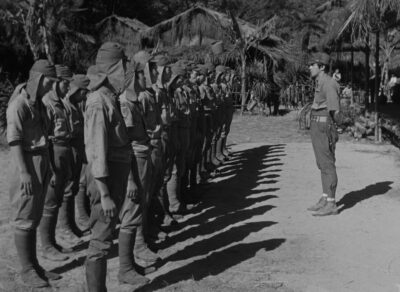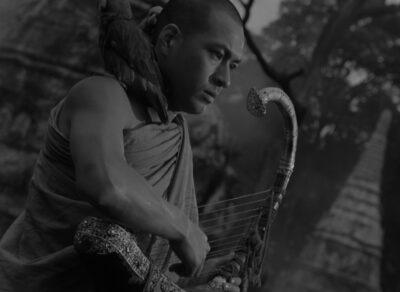“How did they ever make a movie of ‘Lolita‘?” Laemmle Theatres and the Anniversary Classics Series help to answer that question — posed in all the advertising for the 1962 release — with a special screening of Stanley Kubrick’s brilliant adaptation of Vladimir Nabokov’s incendiary novel. The theme of a middle-aged man obsessed with a young teenage “nymphet” was controversial when the book and movie first appeared, and the theme is perhaps even more problematic today.
However, the masterful writing and direction of the film, along with four inspired performances, have continued to keep audiences riveted. James Mason portrays the obsessed professor, Humbert Humbert, and he perfectly captures the lecherousness, unctuousness, hypocrisy, and utter lovestruck vulnerability of a professor in thrall to a sexual compulsion he cannot control. Sue Lyon, in her first starring role, brings off astonishingly varied moods. At times she seems like a whiny, petulant teenager, and at other moments she exudes worldly sophistication. As her mother, the culturally pretentious and needy Charlotte Haze, Shelley Winters gives one of the most scintillating performances of her long career.
But Kubrick’s most brilliant casting coup was choosing Peter Sellers to play Quilty, the villain of the piece who steals Lolita away from Humbert. Sellers had made a splash in a few British films but had yet to reach American movie stardom. His flair for impersonation made him an inspired choice to play Quilty, a master of disguises who torments Humbert in many different incarnations through the course of the story.
In adapting the text, Kubrick and producer James B. Harris chose to veer from the novel and introduce Sellers’ Quilty in the opening scene, as Humbert questions Quilty about his sexual history while the two play a bizarre game of ping-pong. The Saturday Review critic, Hollis Alpert, wrote of this opening scene, “There hasn’t been a scene of equal imaginativeness in movies since, perhaps, ‘Citizen Kane.’” Nabokov himself declared that Kubrick’s opening scene was “a masterpiece” and hailed the film as “absolutely first-rate.”
Although Nabokov received sole credit for the screenplay and earned an Academy Award nomination for Best Adaptation, the script was heavily rewritten by Kubrick and Harris. While some critics at the time were perplexed by the movie, many of the most perceptive reviewers had high praise. Writing in Partisan Review, Pauline Kael asserted, “It’s the first new American comedy since those great days in the ’40s when Preston Sturges recreated comedy with verbal slapstick. ‘Lolita‘ is black slapstick, and at times it’s so far out that you gasp as you laugh.” Critic Arthur Schlesinger Jr., who also served as special assistant to President Kennedy at the time, wrote in Show magazine that ‘Lolita‘ was “wildly funny and wildly poignant… It is beautiful and it is depraved… Kubrick renders farce and satire and comedy and pathos and melodrama and psychopathology with equal skill.”
The leading critic of the era, The New York Times’ Bosley Crowther, declared, “The picture has a rare power.” More recently, Leonard Maltin added, “Winters is outstanding as Lyon’s sex-starved mother.” Jon Fortgang of England’s Film4 commented, “’Lolita,’ with its acute mix of pathos and comedy, and Mason’s delivery of Nabokov’s sparkling lines, remains the definitive depiction of tragic transgression.”
Stephen Farber and Michael McClellan, authors of Cinema ’62: The Greatest Year at the Movies, will introduce and discuss the film with the audience. They will also be selling and signing copies of their highly acclaimed book.


